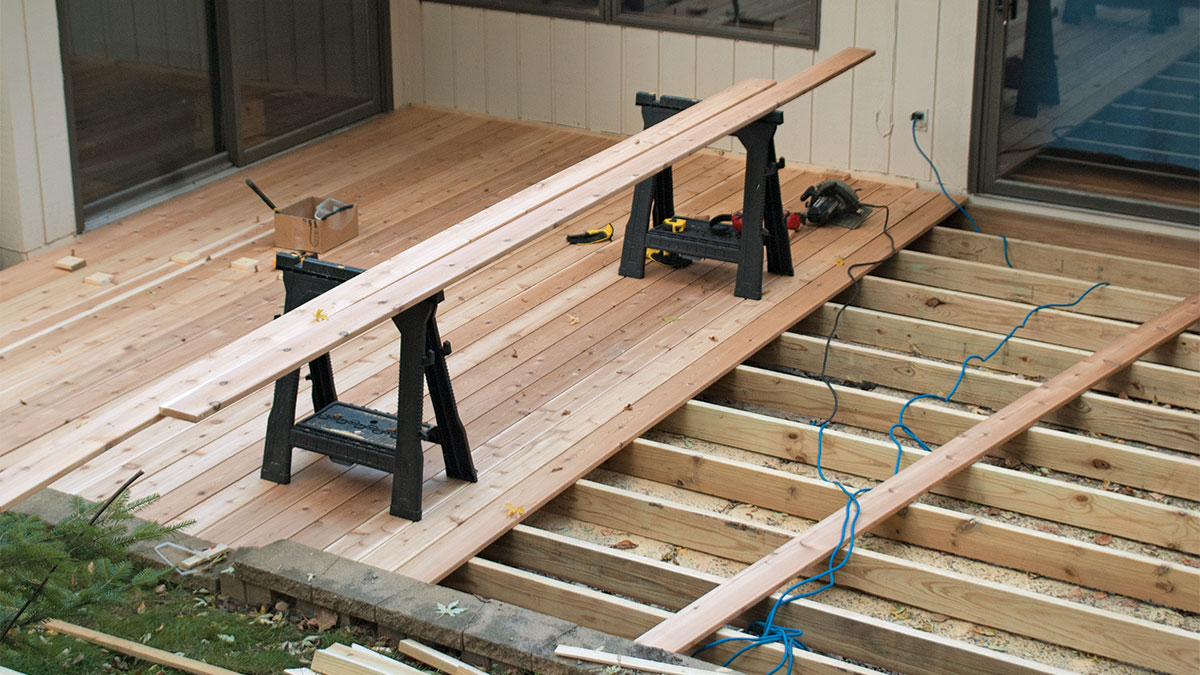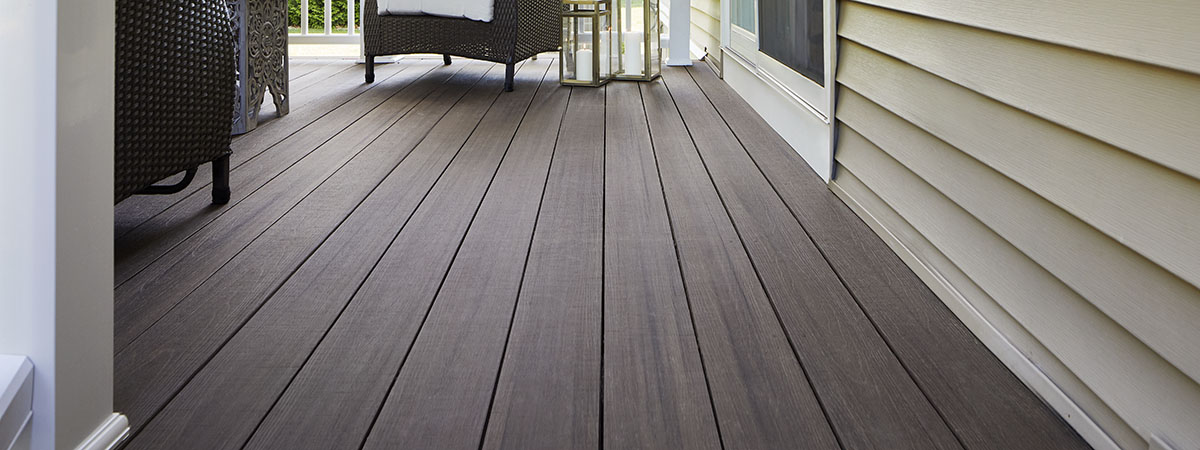Hiring an skilled deck installer Austin is the first step toward creating your ideal outdoor space.
Hiring an skilled deck installer Austin is the first step toward creating your ideal outdoor space.
Blog Article
How to Pick the Right Products for Your Deck Installation Job
Selecting the ideal products for your deck setup job can appear challenging. There are numerous aspects to take into consideration, from durability and upkeep to aesthetic appeals and ecological impact. The selection between typical wood and composite materials, each with its own set of advantages and downsides, can be especially tough. The secret is to balance your budget, layout preferences, and way of life needs to develop a deck that will enhance your outdoor space for several years to come.
Comprehending the Different Kinds Of Deck Products
When embarking on a deck installation job, the selection of materials becomes a pivotal decision. Numerous alternatives are offered, each with distinct attributes and visual appeal. Typical timber, for circumstances, provides an ageless, natural look and is generally much more cost-efficient. Nonetheless, it can warp with time and calls for normal maintenance. Compound products, on the various other hand, are a blend of timber and plastic, supplying durability and resistance to weather components. They demand less maintenance compared to timber but are normally much more pricey. An additional alternative is plastic, which is practically maintenance-free and resistant to pests and rot, albeit much less natural-looking. By recognizing these differences, homeowners can make a much more informed decision on one of the most ideal deck material for their details needs.
Assessing the Longevity and Upkeep Demands of Deck Materials
Assessing the durability and maintenance needs of deck products is a crucial action in deck setup. Resilience includes the material's ability to withstand extreme climate condition, deterioration, and its long life. Cedar and redwood are normally immune to rot and pests, making them sturdy options. On the other hand, pressure-treated wood, while durable, may call for more upkeep as a result of its vulnerability to breaking and contorting.
Recognizing upkeep demands is equally crucial. Some materials call for regular sealing or discoloring to keep their appearance and stand up to wetness damages, while others, like composite outdoor decking, require less upkeep. By assessing these elements, one can choose one of the most ideal decking material, ensuring an equilibrium in between resilience, maintenance needs, and visual appeal.
Expense Evaluation: Contrasting Wood and Composite Decking
Although price might originally feel like a second issue, it is a significant aspect when contrasting timber and composite decking. Wood, typically a much less pricey choice, has a reduced upfront price. Nevertheless, gradually, upkeep expenditures can collect, possibly making timber a lot more costly in the long run. These maintenance expenses may consist of discoloration, sealing, or replacing harmed boards. On the various other hand, composite decking, while more expensive initially, needs much less upkeep, possibly minimizing lasting expenses. Yet, it's vital to bear in mind that composite decking isn't impervious to use and tear, and substitute costs can be high. Therefore, potential deck proprietors have to consider their budget plan and desire to maintain their decks when determining between wood and composite decking.
Aesthetic Appeals and Design Adaptability of Decking Materials
All-natural timber decking offers a classic, classic look, while composite products provide a large array of colors and appearances to match diverse preferences and designs. Composite materials, while less versatile in layout, are still versatile enough for a lot of deck layouts. These variables, therefore, are crucial components in the option of decking material.
Ecological Influence of Decking Materials
When choosing decking materials, one have to consider not only appearances and toughness, but additionally the environmental effect. It is essential to assess the sustainability of materials and discover recycled outdoor decking options. Comprehending the possible effect on regional environments will certainly guarantee an extra eco liable option.
Evaluating Material Sustainability
In the realm of deck building, examining material sustainability is a critical step. This involves reviewing the ecological effect of each potential material, considering factors such as the energy required for its production, its carbon impact, and its end-of-life disposal or reusing alternatives. For example, wood is an eco-friendly resource, but unsustainable logging techniques can lead to deforestation. Alternatively, composite outdoor decking materials usually combine wood and plastic, decreasing the demand for brand-new timber but increasing dependence on nonrenewable fuel sources. Aluminum and other metals might be a lot more sturdy and recyclable, yet their extraction and handling can be energy-intensive. Therefore, the option of outdoor decking products must balance functionality, looks, cost, and sustainability to guarantee a liable and lasting installment.
Recycled Decking Choices

Composite outdoor decking is specifically prominent due to its toughness and simplicity of maintenance. Recycled plastic decking, on the other hand, is highly durable and needs very little upkeep.

Influence On Local Ecological Communities
While the benefits of using recycled products for decking can not be overstated, it's equally vital to consider the more comprehensive environmental implications of these options. The removal, processing, and transportation of materials can exceptionally affect regional ecosystems. Logging for timber outdoor decking adds to environment loss and climate modification. Even the production of composite products can launch harmful emissions. Conversely, making use of recycled or sustainably sourced materials can help alleviate these results. In addition, taking into consideration the More Info life-span of products can decrease environmental effect; here longer-lasting options need less regular substitute, thus conserving sources. Correct disposal of old decking is vital to reducing garbage dump waste. Essentially, an eco-conscious deck task needs careful material selection, sustainable sourcing, and responsible disposal.
Making Your Decision: Tips for Choosing the most effective Deck Products
As the write-up shifts right into the subtopic of "Making Your Final Decision: Tips for Selecting the very best Deck Products", it is crucial to understand the variety of deck materials available. Striking a balance between sturdiness and aesthetic appeal is necessary in this selection procedure. The complying with discussion will lead viewers in making an informed choice based upon these crucial factors to consider.
Understanding Various Deck Materials
The task of selecting the right materials for your deck installment can appear discouraging because of the vast range of choices readily available. Recognizing the various materials can simplify this procedure. Wood is a popular selection, providing a classic aesthetic and cost. Kinds of wood utilized include pressure-treated lumber, cedar, and redwood. Compound materials, made from a mix of wood and plastic, are low-maintenance and immune to rot and insects. Plastic or PVC decks are even extra long lasting and require much less upkeep than composite products, but they can look much less all-natural. Last but not least, light weight aluminum decks are strong, light-weight, and anonymous resistant to rot, but they are additionally one of the most expensive alternative. Each material has its own advantages and drawbacks, making it important to consider your particular needs prior to making a decision.
Resilience vs. Looks Balance
Stabilizing longevity with aesthetic appeals can be an obstacle when selecting deck materials - deck installer austin. High-traffic locations may necessitate durable products like composite outdoor decking, which endures wear and tear yet may lack the all-natural appeal of wood. Home owners require to strike a balance, thinking about both the deck's functional demands and their aesthetic preferences.
Final thought
Finally, choosing the right materials for your deck setup project requires careful consideration of factors such as longevity, upkeep, expense, aesthetic appeals, and ecological impact. Whether you opt for standard timber or composite materials, your option should line up with your spending plan, style preferences, and lifestyle. Eventually, the most effective outdoor decking product is one that boosts your exterior area and offers enjoyment for several years ahead.
Report this page